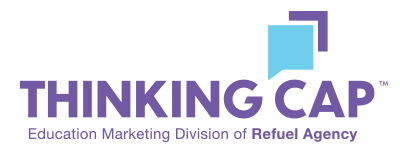The higher education marketing landscape is more competitive than ever. In order to stand out from the crowd and recruit your ideal prospective students, higher education institutions need to streamline their marketing efforts and utilize cutting-edge strategies to make an impact. One key area for optimization is your school’s PPC marketing strategy. Google Ads are a powerful way to attract the right students—if you use them the right way.
At Thinking Cap Agency, we’ve executed campaigns for over 400 universities and have over 30 years of experience—so we’re in your corner to help you achieve the results you’re looking for.

Here are our top 5 super-smart Google AdWords strategies to supercharge your next higher education marketing campaigns.
What is Google AdWords for schools?
Before we get into our strategies, what is Google AdWords for schools? Google AdWords is the most popular kind of PPC (or Pay-Per-Click) advertising, and it enables higher education marketers to list advertisements for their schools or programs at the very top of Google search results for designated keywords.
Higher education marketers bid on keywords and audience types, and essentially allows marketers to buy visits to their website instead of relying solely on organic search traffic. And for higher education institutions that students are researching for up to 2 years in advance, a healthy PPC strategy is vital to success.
1. Nail Your Keywords
Your list of PPC keywords are the backbone of your PPC marketing strategy—so getting them right is essential. Luckily, determining your list of keywords is likely easier than you think it will be.
To start, put together a list of topics, programs, features (like online learning), and pain points your prospective students might be interested in knowing more about. Include both broad terms, narrow terms, and branded terms. Also, take a look at your competitors’ search terms for additional ideas.
Then, analyze your list. Determine which terms are the most valuable based on your school. There are a variety of PPC keyword tools to help you determine which keywords are your winners based on search volume, competition, and cost per click.
How do you know if your higher education keywords are working? Look are your click through rate and your conversion rate. Google AdWords gives you a Search Terms Report that will help you determine whether your targeting methods align with the ad’s real-life performance.
Read next: 7 of the Best Higher Education Marketing Campaigns to Inspire You
2. Create A Powerful Bidding Strategy
Now that you have your keywords nailed down, the next step is to ensure your bidding strategy is efficient and powerful. Higher education PPC campaigns can be expensive, and the price of keywords varies widely based on competition, search volume, the quality score of your landing page, ad rank, and your ad’s previous performance.
Google’s Keyword Planner will give you a general idea of what you’ll spend on any given keyword, and you can use that information to determine how to distribute your budget across various campaigns. You choose either automatic bidding, where Google bids for you. This option makes bidding easy for beginner advertisers. For more seasoned advertisers, manual bidding (where you bid on the keywords yourselves) allows you to make the most of your budget.
Read next: How Has COVID-19 Impacted Interest in Higher Education
3. Build Dedicated Landing Pages
A higher education landing page is a standalone web page offering specific information and designed specifically for students to take a desired action—and is a key component of a higher education marketing strategy. This dedicated landing page should position the program based on your student persona for the program, offer all relevant information, and be SEO-optimized so that each page is driving quality organic and paid web traffic from students researching your program.
Instead of sending your prospective students to your home page, it’s a best practice to send searchers to a dedicated landing page that’s clean, to-the-point, and offers helpful information about what they were searching for. A quality landing page will help you prospective students understand who you are quickly, navigate to additional resources, and provide exactly the experience your prospective students are looking to get.
Learn more about how to create higher education landing pages that accomplish your recruitment goals (and don’t hurt them) here.
Read next: Video Is The Future of Enrollment Marketing
4. Monitor and Optimize Your Ads
Now that you’ve selected your higher education PPC keywords, you’ve created a powerful bidding strategy, and you’re sending your prospective students to landing pages that fulfill their specific search intent—you need to monitor and optimize your ads.
This takes time and attention, but you want to determine what exactly makes your ads successful (or not). Depending on your findings, you can then make adjustments to your ad’s keywords, copy, design, or landing pages. For example, if your ad has a high click-through rate but a low conversion rate, the problem is most likely your landing page — your searchers aren’t getting what they clicked to get.
Read next: How to Create Data-Driven Student Personas for Higher Education
5. Enlist A Winning Marketing Team
Finally, the last strategy for winning higher education PPC campaigns is to enlist a winning higher education marketing team. The team of campaign strategists and experts at Thinking Cap Agency is here to ensure that your campaigns are strategic, effective, and deliver optimal ROI for your higher education institution.
Read next: The Anatomy of a Great Higher Education Landing Page [With Examples]
Are you ready to increase your qualified student inquiries? Thinking Cap Agency is here to help. We leverage our 30 years of experience, data-driven omnichannel solutions, proprietary research, and team of specialized experts to drive exceptional campaign results. Contact us today to get started.




